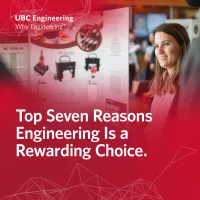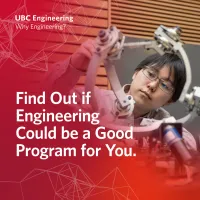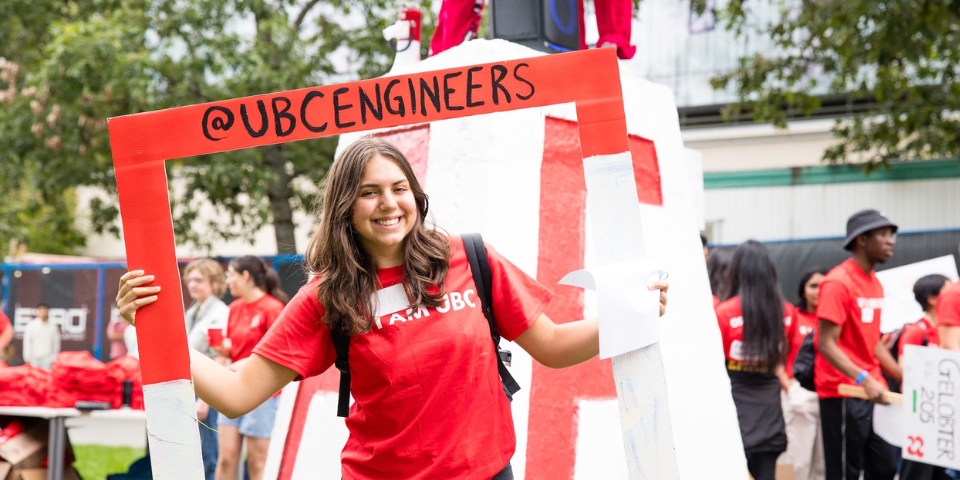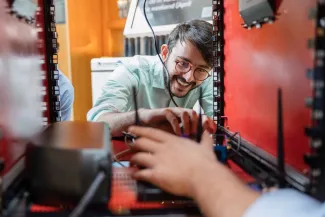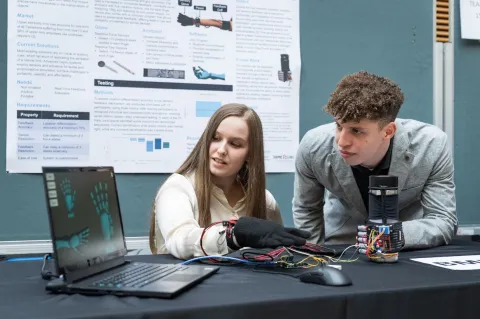
There are many reasons that UBC is one of the best places to study engineering. One that’s at the top of the list is the sheer number of engineering programs (and their sub-specializations) to choose from and that are most in demand from employers.
Some of our programs, like geological engineering, have been around from the very start of the university in 1921, while others, like biomedical and manufacturing engineering, were introduced more recently in response to the need for engineers with specialized skills in specific areas.
What’s an engineering program?
When you decide to study engineering in university, you also need to decide on a specialization or program.You may already know a bit about some areas of engineering, like civil engineering (which focuses on infrastructure), mechanical engineering (the study of moving parts) or electrical engineering (everything from nanoscale devices to power distribution).
But there are other areas of engineering you might never have considered to study, either because you’ve never heard of it, don’t know anyone who works in that area or haven’t yet discovered that it’s the area of engineering just right for you!
Programs at UBCV Programs at UBCO
Choose your path at the end of first year
Towards the end of first year, you’ll choose the path you want to focus on for the rest of your degree. At UBC Okanagan, students select from four programs – civil, computer, electrical, and mechanical. You can also choose a concentration for your program to build specialized expertise in areas like mechatronics, aerospace and resilient infrastructure.
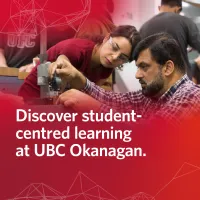
At UBC Vancouver, students choose from the following 14 programs: biomedical, chemical, chemical and biological, civil, computer, electrical, engineering physics, environmental, geological, integrated, manufacturing, materials, mechanical and mining.
Some of these programs also offer specializations, which means you can take a series of courses to concentrate on specific areas.
Gain knowledge of different areas of engineering
Here’s another thing to keep in mind. At the undergraduate level, at least, engineering programs strike a balance of offering a broad range of topics with opportunities to specialize in your upper years. If you take a look at the courses you’ll study in each program, you’ll see that you’re often taking courses from a range of areas.
For example, if you are in biomedical engineering, you will be taking courses to gain knowledge of electrical, software, mechanical and materials engineering. Same thing if you are in mining or materials engineering.
What this means is that while the program you choose is definitely going to influence your career path, it’s not going to lock you into one area of engineering for life. You will graduate with the knowledge and experience you’ll need to work in a range of areas and industries.
